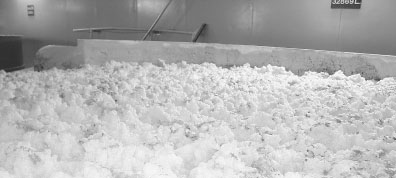High Kräusen is a German term, also widely used in English, which refers to the large, billowing, unkempt head of foam that forms on the surface of beer at the peak of fermentation. It refers not only to the foam itself but also to this phase of fermentation; when wort reaches the peak of its fermentation, it is often said to be at high kräusen.
The name comes from the German Hochkräusen or hohe Kräusen, which has the same definition and likely originates from kräus, an adjective denoting “wrinkled,” “furrowed,” or “frizzy.” This word is often used in reference to a disorderly mane of curly hair (its infinitive kräuseln means to wrinkle, ruffle, curl, etc.).

Top-fermenting yeast throws a heady layer of foam on top of the brew during the vigorous stage of high kräusen at the start of primary fermentation, as shown here in an open fermenter at the Schneider Weissbier Brewery in Kelheim, Germany. horst dornbusch
In a traditional fermentation cellar, beer ferments in open vessels that allow the brewer to visually control different stages of fermentation. Low kräusen, the prior stage, has a dense, creamlike, and relatively uniform head of foam. Though white at first, copious amounts of carbon dioxide (CO2) bubbles congregate particulates from the wort, causing the foam to develop yellowish-brown tips. Metabolizing yeast lowers the pH and causes unisomerized hop bitter compounds and resins to precipitate, along with tannins, denatured proteins, melanoidins, and other coloring agents from both hops and malt. This layer continues to grow, lose density (due to maximum CO2 production), and darken until it reaches its maximum height during peak fermentation, that is, the high kräusen.
During high kräusen the foam on top of the fermenting beer is intensively bitter and very adhesive. Its appearance depends in part on the composition and concentration of the wort, amount of hops, type, and amount of yeast, fermentation temperature profile, and rate of CO2 produced. Many of these intensely bitter compounds, some of them carrying coarse flavors, will adhere to the walls of the fermenting vessels during a vigorous fermentation, thus removing them from the beer.
